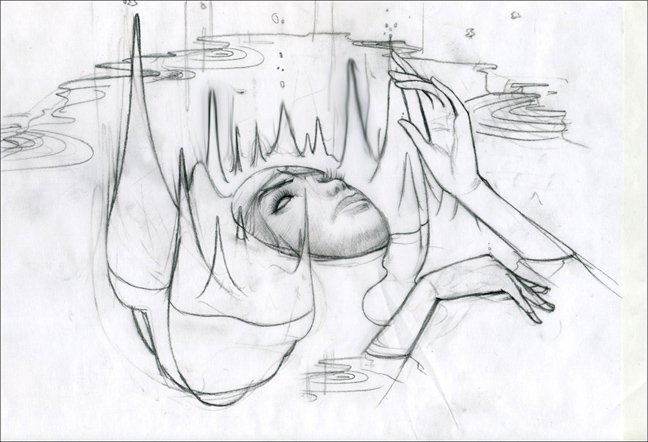An artist you will be hearing more of in the future, Eric Fortune, has sent us some progression images of his latest piece “A Want To Believe.” Eric has a career in illustration but seems to be making a transition into the gallery scene with shows coming up at Ad Hoc Gallery, Cerasoli-LeBasse, and Roq La Rue. We love his elegant composition, delicate poses, and rendered lighting that seem to make his paintings glow.
This will be the first of a series of “creative process” features that AM is working on that will allow artists to explain their craft to our readers in their own words. As collectors, we are definitely interested in how a certain artist achieves their characteristic effects or came up with an idea. This will allow us to satisfy our curiosity as well as yours!
Read as Eric explains his process from beginning to end after the jump…
“First, I need an idea/concept worthy of becoming a painting. Sometimes they come in a flash (my personal favorite) and sometimes I grind through sketches until I’ve worked everything out. A lot of sketches don’t make the cut.”
“Once I have the sketch worked out I have a model, usually family or friend, pose for photo ref. Afterwards, I use a light table to loosely transfer my sketch. Using the photo ref I then refine the drawing on the paper. It’s always a bit of a struggle finding the balance of using the photo ref and maintain the freshness of the initial sketch. Using acrylic paints on arches water color paper I start off by doing broad thin washes of paint.”
“It’s basically multiple….MULTIPLE layers of thin washes. Slowly building up the value and color. As I paint there’s usually room for some unexpected things to happen as the washes may start to form “shapes” on their own.”
“Over the years I’ve become a little better at letting some things in the painting go and tightening up on others. This can create a sense of depth as well as juxtaposing something well rendered next to something more loose and spontaneous. As I approach the end of the painting I find it easier to put in the long hours because I really enjoy noodling details. The sooner I get to the end the sooner I can noodle out details and tweak the image until it’s just the way I want it.”
Discuss Eric Fortune here.










